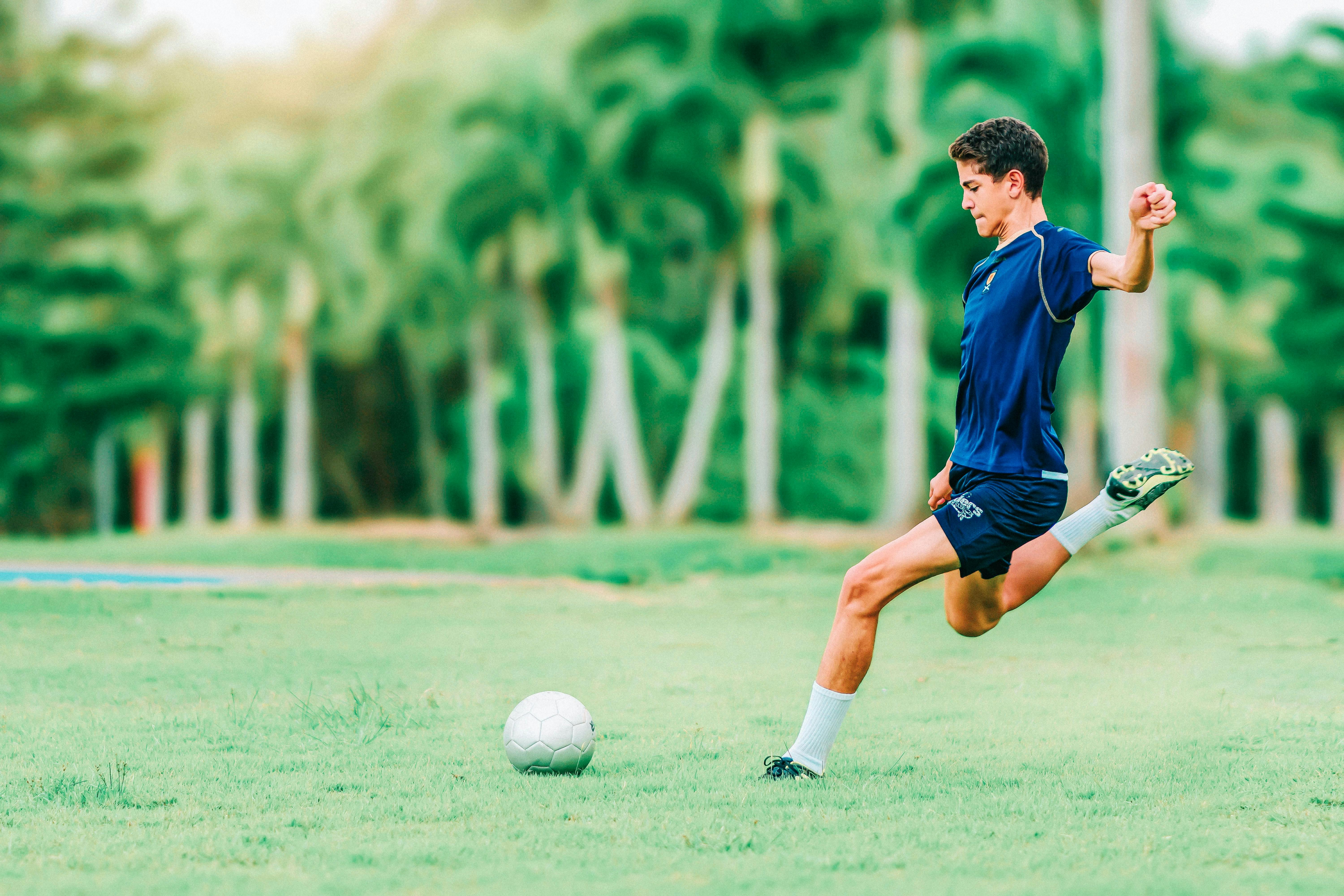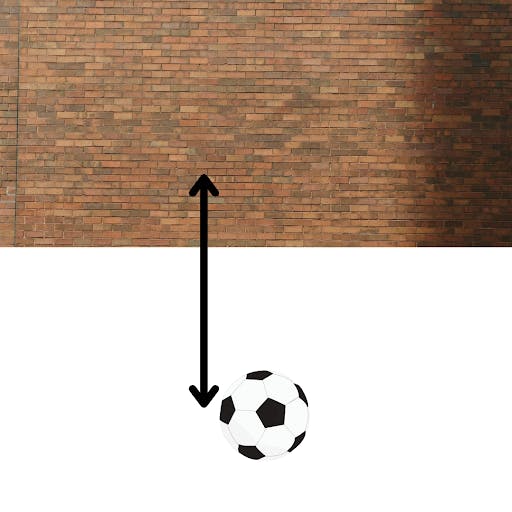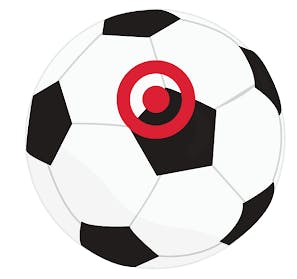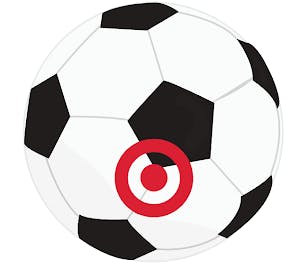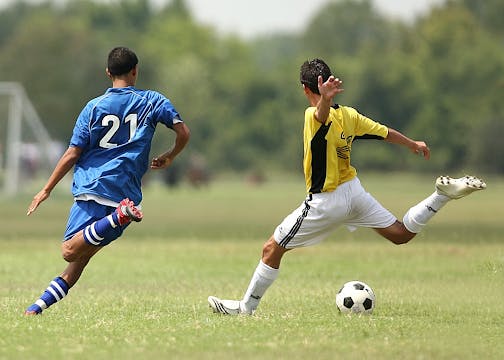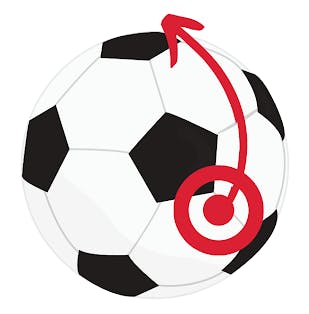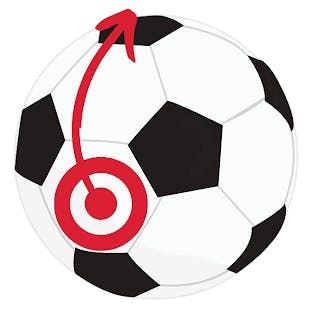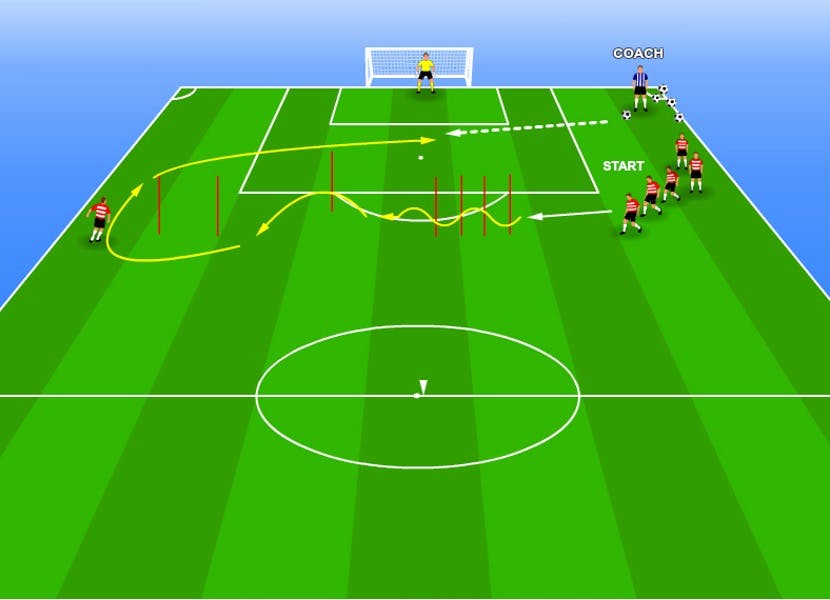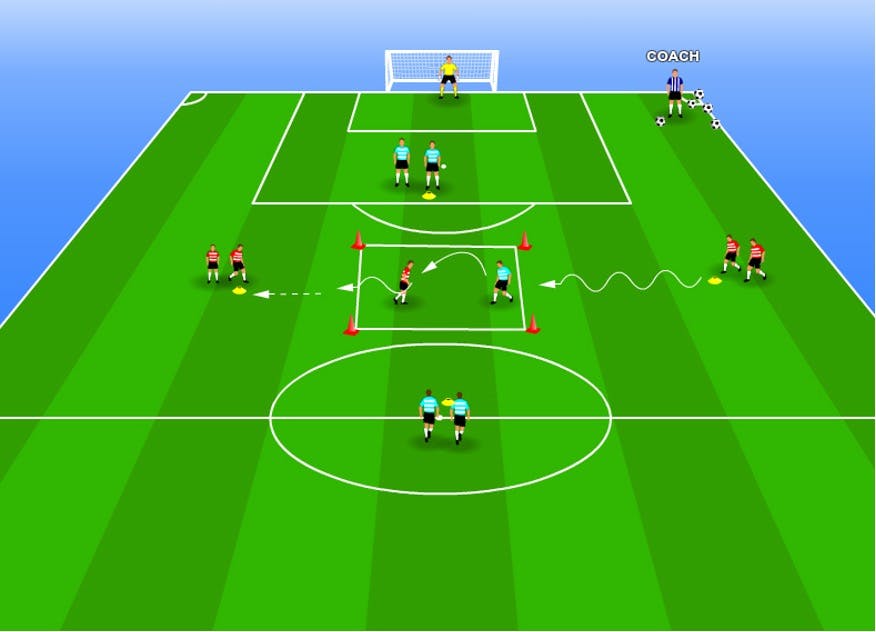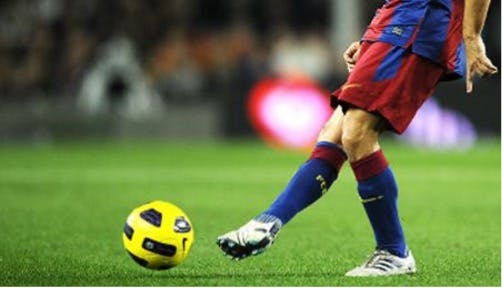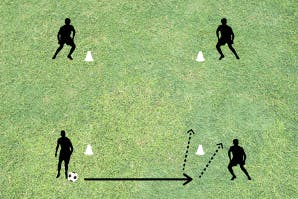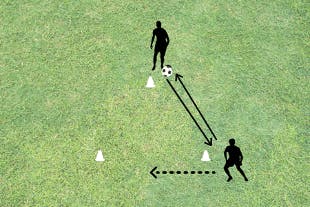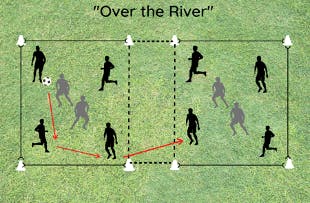How to Kick a Soccer Ball
- By Kieran Furse
Kicking a soccer ball is a generalized term that is an extensive topic. Unlike kicking in other sports such as football or rugby, where a 'punt' accounts for most of the kicks, in soccer, there are hundreds of different kicks depending on the situation.
Despite this fact, kicking a soccer ball is a factor of soccer that is not taught as in-depth as it should be. In this article, we will cover how to perform a perfect soccer kick in all situations on the field. This includes:
➢ First touch
➢ Short and long passing
➢ Putting curl and spin on the ball
➢ Power shooting
➢ Chipping the ball
➢ Knuckle Ball
Without a strong foundation in kicking a soccer ball, the rest of the skills that you will learn later in your career will be more challenging to pick up. Luckily, you have come to the right place. After reading this article, you will have all the pieces to kick a soccer ball like the pros correctly.
1. First Touch
Undoubtedly the most overlooked skill in the game of soccer. Without a great first touch, it does not matter how good your second touch is. You would not be able to play as quickly or with as high quality if you had a good first touch.
What does a good first touch look like?
A good first touch ultimately must set you up for success in whatever your pre-planned play is. This means it must be:
➢ Directed the way you want to pass or dribble
➢ Out of reach of defenders
➢ Out from under your feet to allow you to move and play at pace
Now the tricky part… How do you kick the ball in this situation to set you up to play how you want?
The key is to be as delicate as possible. Imagine you are playing soccer on the second story of an apartment, and you don't want to wake the person below you. You can use the outside, inside, laces, or sole of your foot depending on the way the ball is coming to you, but the idea of a good first touch is to take the pace off the ball and direct it 1-2 feet in front of your intentional stride.
How to Improve your First Touch?
Most of your soccer heroes learned the beautiful game on the street with little to no equipment. Improving your first touch can be done as simply as kicking it against a wall. Each time the ball comes back to you, you can touch it in a different direction to work both feet. As you improve, you can start to add more power to challenge your touch. From the image below, you can see the simplicity of the day and how repetition is essential.
If you have more players to work with, you can begin to pass the ball to each other to make the drills more three-dimensional. For example, here is Coach Michler explaining a drill that works on the technical aspects of a first touch and pass.
2. Short and Long Passing
Short passing is the most common kick in the game of soccer. It allows teams to move the ball to a more favorable area of the field. Long passing is less frequent as it serves a more specific purpose, such as relieving pressure or counterattacking.
These forms of passing require the same focus and foundation of kicking. However, they do differ in some forms.
1st Difference
When kicking the soccer ball for a short pass, you want to get over the ball. This means my body is tilted over the ball, and I am kicking towards the top of the ball. We want to do this, so the ball stays firm to the ground to make it easier for our teammate to control it. An ideal zone to kick the ball would be here.
For a long pass, you will most likely want to put height on the pass to place the ball over the head of defenders and reach your target. This means you need to aim more to the bottom of the ball. You will also need to kick the ball with much more force to allow the ball to travel further.
2nd Difference
The second difference between these two types of passes is where you connect with the ball on your cleat. To allow your body to get over the ball, with short passing, you will connect with the side of the inside of your foot.
Since you are trying to get more power and height with a long pass, you should allow your chest to be more open. The connection on the ball should also be with the joint that connects your big toe to your foot. This will allow you to follow through with a motion that propels the ball upwards at about 30 degrees.
Similarities
As with any contact with the ball, you want to plant your standing foot just to the side of the ball to allow for stability and accuracy when you pass. If you are right-footed, this will be left and the opposite if you are left-footed.
To ensure that your pass is accurate and smooth, you need to make sure that you follow through with your kick. Many people kick and stop the movement rather than following through. This harms your kick in many ways and can cause injury.
A significant factor that many players forget is the importance of the upper body in kicking the soccer ball. As you can see with this player in the image below, his opposite arm is stretched wide while kicking the ball. This allows your body to rotate into the kick, more balance, and power when connecting with the ball.
Locking your ankle is probably the number one term you have heard when people talk about kicking a soccer ball. This is for a good reason. When your foot is loose and wild, there is a lower chance that the ball will go where you want it. Take control of your foot by locking your ankle to make your foot stiff like a golf club.
3. How to Curl and Spin a Soccer Ball?
Although this may sound a bit technical, it is much simpler when you know the basics. The concept of curling a ball is due to the air pressure hitting the ball as it moves at different forces. You need to hit the ball with spin and power to create this motion. This
superb skill will allow you to avoid obstacles and impress your friends.
Inside of the Foot Curl
To create the whip of the curl, you need to stand between 90 and 45 degrees toward the ball. This will allow you to strike the ball across your body to create the curl. You also want your body to be tilted slightly to shift your weight to the side you want to curl the ball.
We want to strike the ball with the big toe joint like the long pass. However, the motion will be different, as depicted in this image.
For a right-footed player (opposite for left.) You want to be connecting with the ball in this area and whipping the ball back towards you to create the spin on the ball.
To see some of the best players in the world complete this skill, be sure to check out Lionel Messi, David Beckham, or Ronaldinho.
Outside of the Foot Spin/ Curl
This skill in soccer kicking is mainly called spinning the ball because you cannot produce the whip and curl that you would in an inside foot kick. Since we are kicking with the outside of the foot, we cannot wrap our body and leg around the ball to create this curling motion.
The spin comes from the ankle joint and the foot in this kicking technique. As you connect with the ball, you want to flick your foot (right-footed players) to the right to allow the ball to spin and slightly curl that way.
The outside of the foot can be performed when your weight is balanced on your left foot, and you need to spin the ball around an obstacle.
4. How to Kick a Soccer Ball with Power?
A power shot is often called 'shooting with your laces.' The reason for this is to perform a shot with power; you need to connect with the ball on the laces of your cleats. This is because you can get the full force of the momentum generated by your run and backswing through the ball when you kick. Unlike the curling shot, you want everything to be linear to generate as much power. This includes your run-up and body position, which you want to be straight and lean over the ball.
As with all soccer kicks, you want to follow through with your opposite arm stretched outwards for maximum balance. When connecting with the ball, you want to connect directly in the center of the ball to ensure no power is lost by missing parts of the ball. Whether you wish to produce height on the ball or keep it flat, you can adjust your contact on the ball slightly above or below the center.
Funnily enough, the best way to learn how to kick the soccer ball with power is by trying not to kick it with power. Here is a clip that explains this concept.
5. How to Chip a Soccer Ball?
Chipping the ball is one of, if not the most challenging skill on this list, but indeed a spectacular skill to have in your arsenal. A chip is best used to avoid an obstacle in tight spaces. Whether you need to chip it over a defender's foot in a dribble, chip the ball over a defender's head to play a pass, or chip the goalkeeper to score a goal. These examples are based around the same motion but require different levels of force to cover the height.
The motion which we are talking about is scooping the ball from underneath. To execute this type of soccer kick, we want to place our foot under the ball, quickly lift our toes to the sky, and raise our legs. This will get the ball off the ground at the desired height.
6. How to Knuckle a Soccer Ball?
How to knuckle a soccer ball is one of life's biggest questions. Taking a shot like Ronaldo or Bale is a thing of beauty. As a bonus, we would like to share this clip on how to shoot a knuckleball.
Final Thoughts on How to Kick a Soccer Ball
When learning how to kick a soccer ball, the most crucial element is focusing on the basics mentioned in this article. Do not rush the process, as, without a strong foundation, there will always be mistakes when attempting more expert skills.
Check out more about fundamentals in soccer here.

